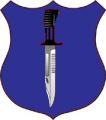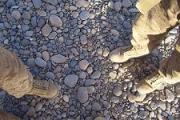While reading this article, The Defence of Strong Point Centre from the Canadian Military Journal, I came across the following statement;
.Larochelle thought he was hallucinating when he witnessed what he perceived as mini-explosions going off above his outpost. Little did he realize at the time that the enemy was using RPG munitions that emitted mini cluster rounds from their 75mm warheads, which, in turn, exploded, spraying deadly shrapnel, much like an air-burst round
AFAIK the RPG series do not have sub-munition/DPICM-style rounds. Is the report accurate or is it simply a case of the Taliban using the self-destruct fragmentation effect of the warhead when fired at extreme range?
I think the latter (thus pointing to the Taliban using RPGs either from farther away than the contact reported above or using the RPGs in the ad hoc mortar role as the Mujahedeen did during the Afghan-Soviet conflict, though usually out of necessity). I say that because the target of the above RPG strike was the Forward Observation Post/Strong Point centre located in and around a thickly built mud, straw, thatch hut within which above mentioned Pvt Larochelle was manning a GPMG and which had a “loose tarpaulin” roof which likely would have proved a tempting target; they may have decided to use their RPGs to lob one into/over the compound.
Of course the other possibility is that, in the absence of Taliban mortars equipped with such rounds (there is no mention of mortars being used by the Taliban in the engagement recounted in the original article, only RPKs and RPGs) and assuming that the munitions identified were indeed sub-munition rounds could they be the result of rcl rifle fire? Which leads me to ponder the same question above?
What say my betters?
(p.s. Can anyone tell me where I'm going wrong with my quotes?)
















Bookmarks